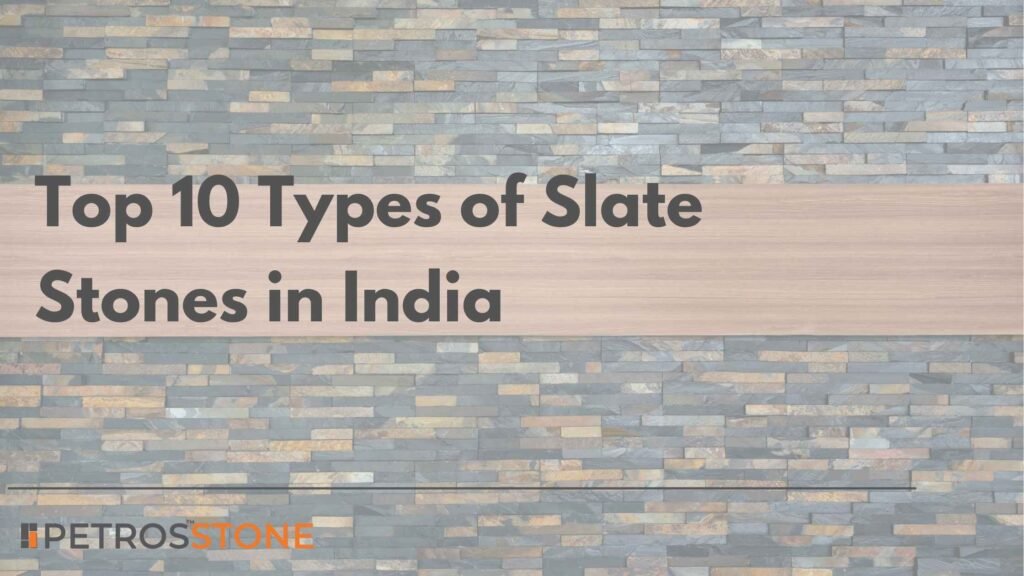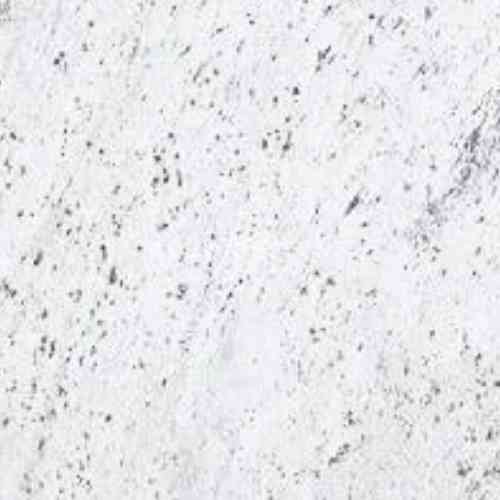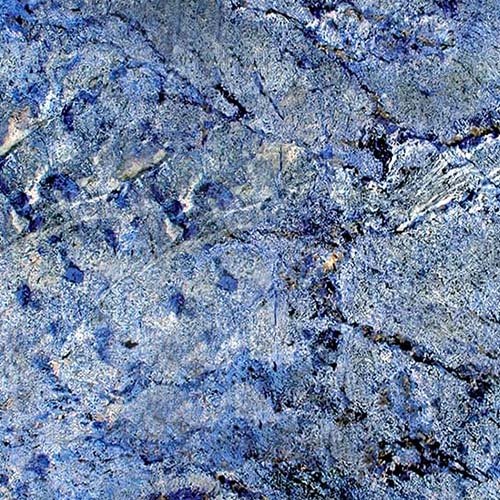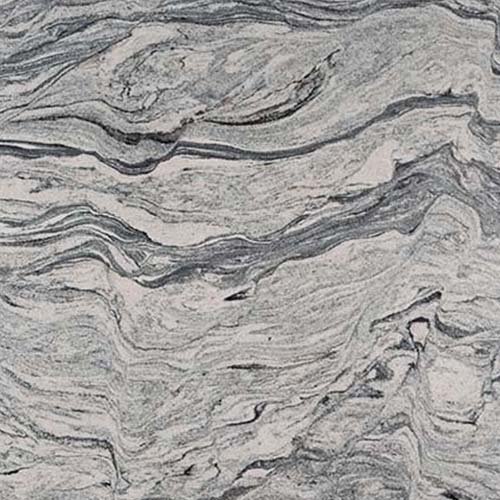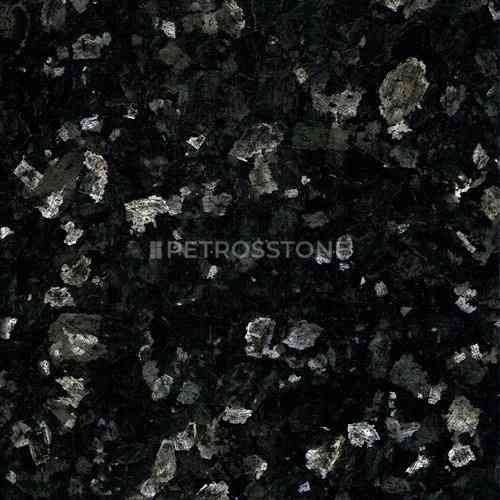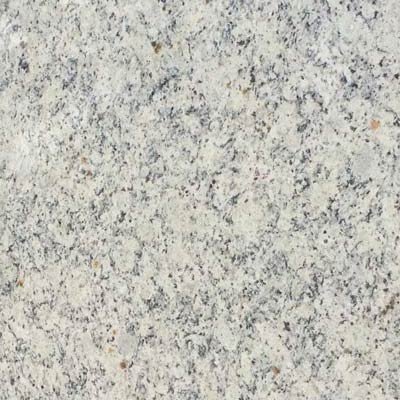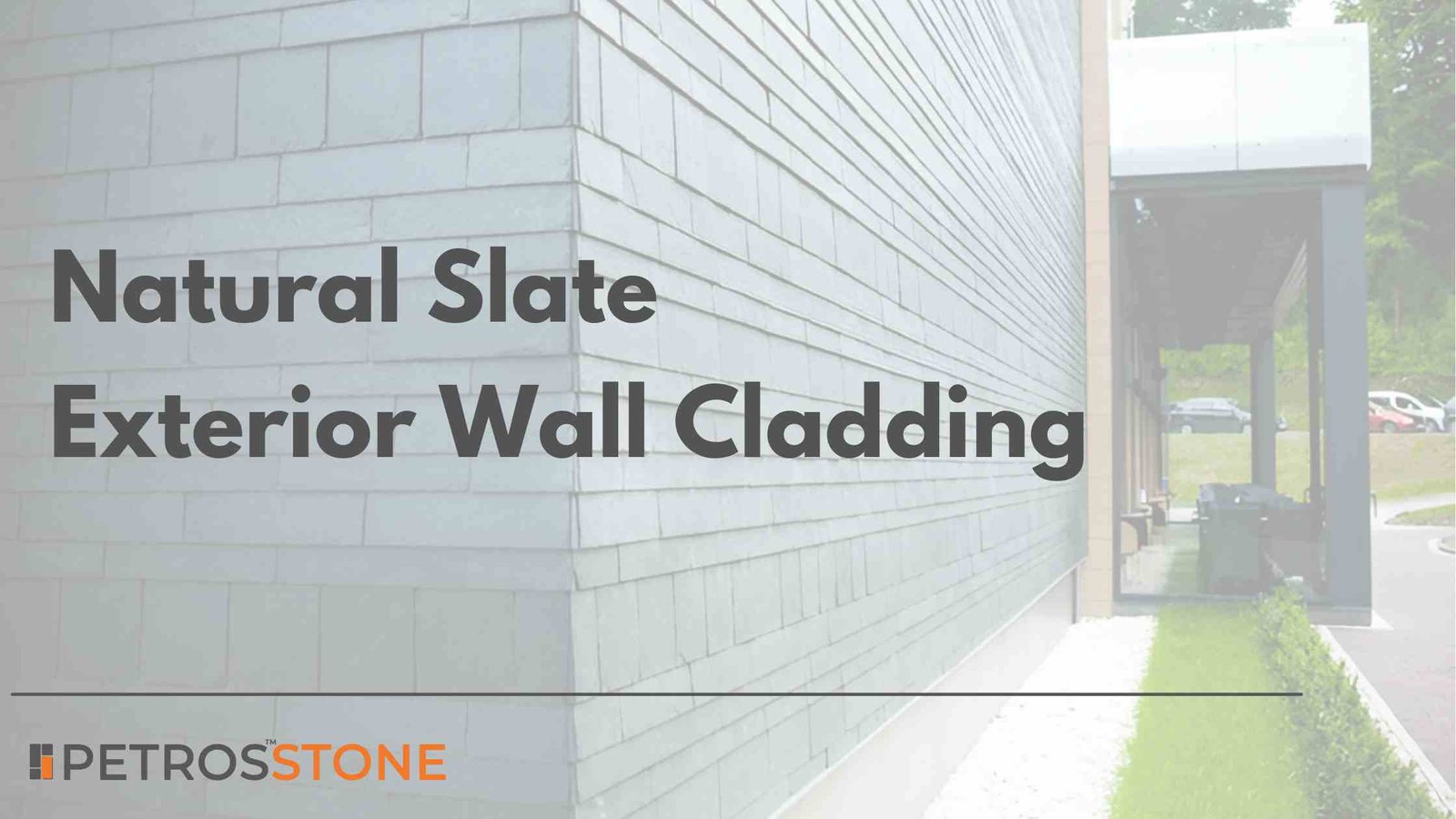
Natural slate exterior cladding is a method of attaching thin slices or panels of natural slate stone to cover the exterior walls or surface of a building. This technique has endured for generations, with some historic townhouses and villages in Europe still standing as a testament. Importantly, natural slate continues to be a hot favorite for residential projects – not just because of its beauty, but also due to its strength, fire resistance, and ability to withstand harsh weather conditions with little maintenance.
Furthermore, the eco-friendly material continues to gain ground against stucco and manufactured stone options. Its earthy textures, subtle color variations, and adaptability across rustic and contemporary designs make it a natural choice for homeowners who wish to entwine quality with unmatched beauty.
Pros and Cons of Natural Slate Cladding: A Quick Comparison Table
| Pros | Cons |
| Each piece has unique textures, patterns and colors. | Slate cladding materials can be more expensive compared to other cladding options. |
| Resistant to weather, fire, UV rays and physical wear. With proper care, natural slate cladding can last for 50+ years. | The slate is dense and heavy in weight. It adds significant dead load and calls for a strong substrate. |
| Natural slate has good thermal insulating properties. This helps in reducing energy costs. | Requires skilled labor, and is time-consuming due to its fragile nature. |
| Exhibits relatively high resistance towards mold, mildew and staining. | Porous varieties call for proper sealing. If not, there is risk of causing internal damage. |
| Natural slate is incombustible. | Individual slates are brittle in nature. They can crack or break very unexpectedly if mishandled. |
| Recyclable, and requires relatively low processing energy compared to synthetic materials. | Poses structural challenges. Careful structural planning is needed to accommodate its weight, and to prevent stone falling hazards. Risky in seismic zones. |
| Performs well across climates, when installed properly. | Without careful planning, the natural patterns and texture variations can lead to less uniform looks. |
| Due to enhanced curb appeal and aesthetic strengths, advantageous for resale value, which gets better with time. | Professional expertise is required to avoid moisture trapping and durability issues. |
| Improves indoor air quality through ionic exchange and microclimate regulation. | Very rarely, natural slate’s mineral composition and crystalline structure can interfere with local electromagnetic fields. This can subtly affect the performance of sensitive outdoor sensors, irrigation controllers and some wireless devices. |
In this article, we explore the benefits and drawbacks of natural slate cladding, common colors and design patterns, suitable installation methods for different climates, and how to choose the right slate style for your home or project. You’ll also find detailed tone guides, lighting tips, and comparisons to other façade materials to help you make an informed decision.
- Pros and Cons of Natural Slate Cladding: A Quick Comparison Table
- Key Features of Natural Slate Cladding
- Colors and Character of Natural Slate Cladding
- Popular Slate Colors and Their Best Applications
- Table for Slate Color, Style Preference & Best Fit
- Slate Cladding Patterns and Styling
- Patterns Guide and Best Fit
- Top Design Ideas with Lighting and Tone
- Slate Design Ideas with Useful Tips
- Installation Techniques and Considerations
- Pros and Cons of Natural Slate Cladding
- Summary
- Key Takeaways
- Need Assistance?
Key Features of Natural Slate Cladding
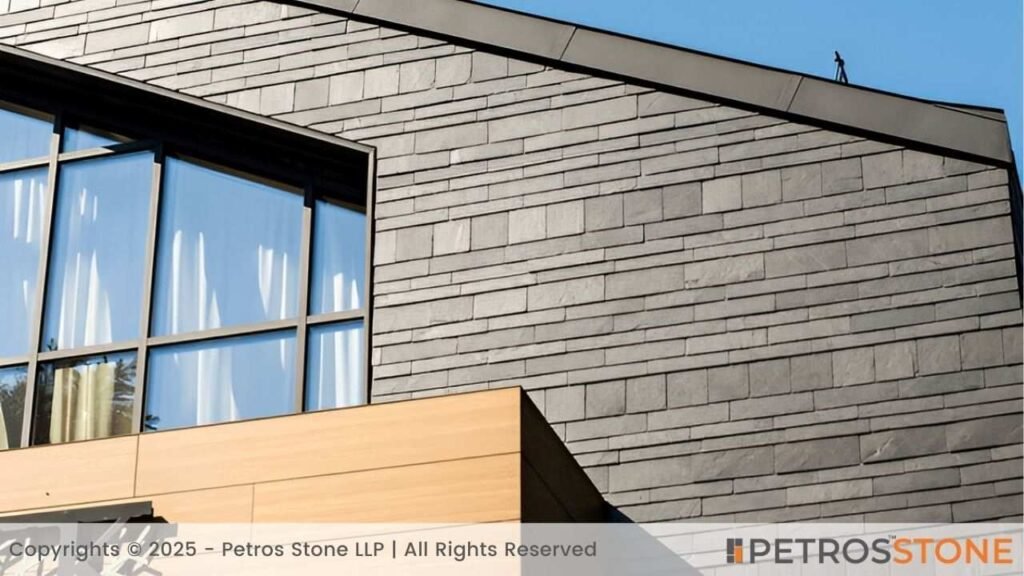
Durability and Longevity
Natural slate is a metamorphic rock formed from shale, a fine-grained sedimentary rock, when it is subjected to immense heat and pressure. This is the reason for its fine microcrystalline structure. Natural slate has a comprehensive strength ranging from 100 – 200 MPa (a unit of pressure), making it highly resistant to cracking under extreme loads.
Weather and Water Resistance
Slate is generally non-porous, depending on the quarry. Therefore, it becomes highly resistant to penetration from rain, frost damage, and moisture-related cracks.
Fireproofing
Slate has an impressive melting point of above 1200°C (2192°F), making it fully non-combustible. It has a Class A fire-rating for this reason, which is regarded as the highest standard for any building material.
Thermal Performance
Because of its thermal mass, slate absorbs heat during the day and releases it slowly at night. It requires a lot of energy to change temperature, which keeps indoor conditions stable, thereby reducing energy demand for heating and cooling in houses. Also, slate’s low thermal conductivity makes it a better insulator than brick.
Acoustic Comfort
Slate naturally dampens and reduces sound vibration. In thick urban neighborhoods, it comes in handy for cutting down external noise.
UV and Color Stability
Slate’s mineral-rich structure ensures it doesn’t fade even under prolonged exposure to sun. Varieties like green slate retain their natural color, creating facades that develop a more distinguished look as they age gracefully with time.
Sustainability
Natural slates are fully recyclable. It generates little to no waste in the end-of-life stage. Because of its longevity, slate reduces lifecycle costs – the total expenses in its lifespan – and environmental impact.
Low Maintenance
Slate doesn’t call for frequent sealing like sandstone or frequent repainting like stucco.
Inimitable
No two slate-clad projects can ever look the same. Colors depend heavily on quarry origin. Once a quarry vein is exhausted, that specific mineral composition can never be achieved again.
Colors and Character of Natural Slate Cladding
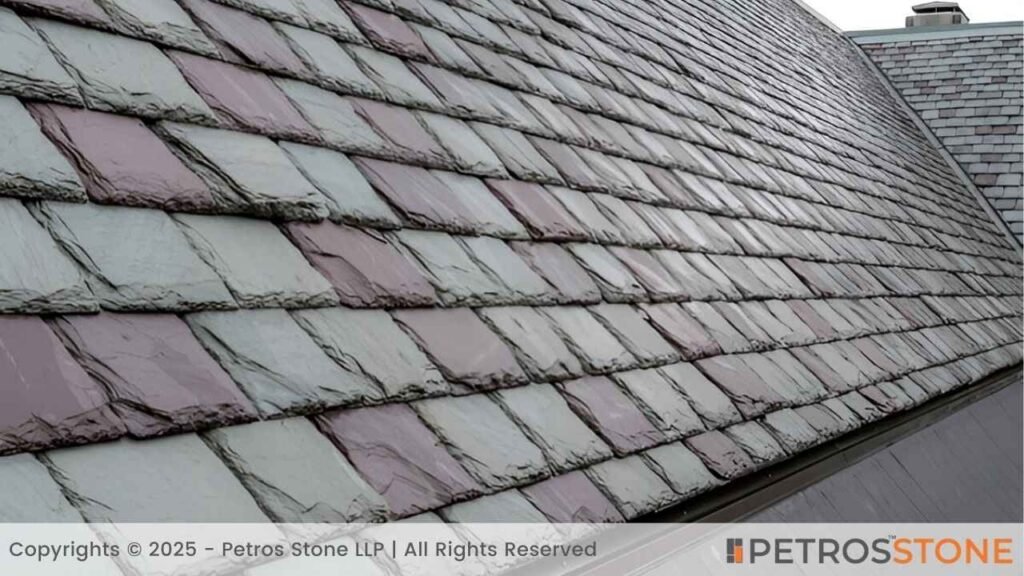

- Natural slate has a color depth no artificial cladding can match. It resists UV fading and gains richer undertones as it weathers with time. Due to natural weathering, slates like blue-gray may develop copper undertones. Some greens can turn to earthy browns. This fine transformation makes the slate fiercely vintage in style.
- Whether you’re aiming for a bold, handcrafted look with multi-tone walls or a refined uniform façade, slate’s natural palette delivers unparalleled design value with a modern look.
- Tones ranging from familiar grays, blacks and greens, to unique shades like rust-red or plum, unlike ceramic or cement boards, are not manufactured colors, but a result of the rare accumulation of minerals over millions of years.
- Common shades include charcoal gray, graphite black, silver-blue and forest green.
- Rare quarry-specific colors like rust-red, plum, or ochre-brown make for standout finishes that match unique projects.
- Sometimes, colors lean on regional availability – Vermont slates, known for its green and purples are widely used like that. Spanish slates, with its one-off grays and blacks, are used in wide-format cladding.
Popular Slate Colors and Their Best Applications
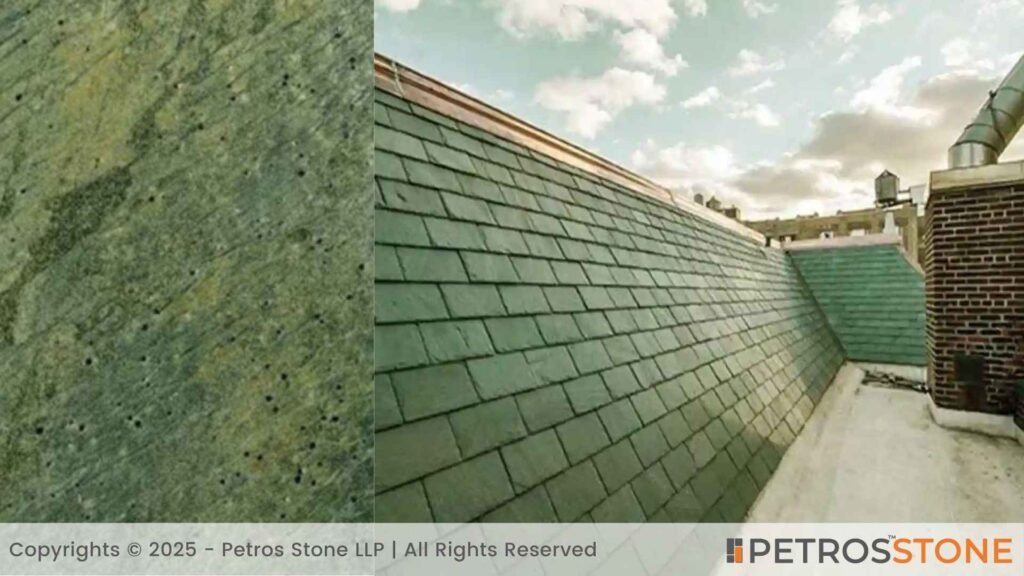
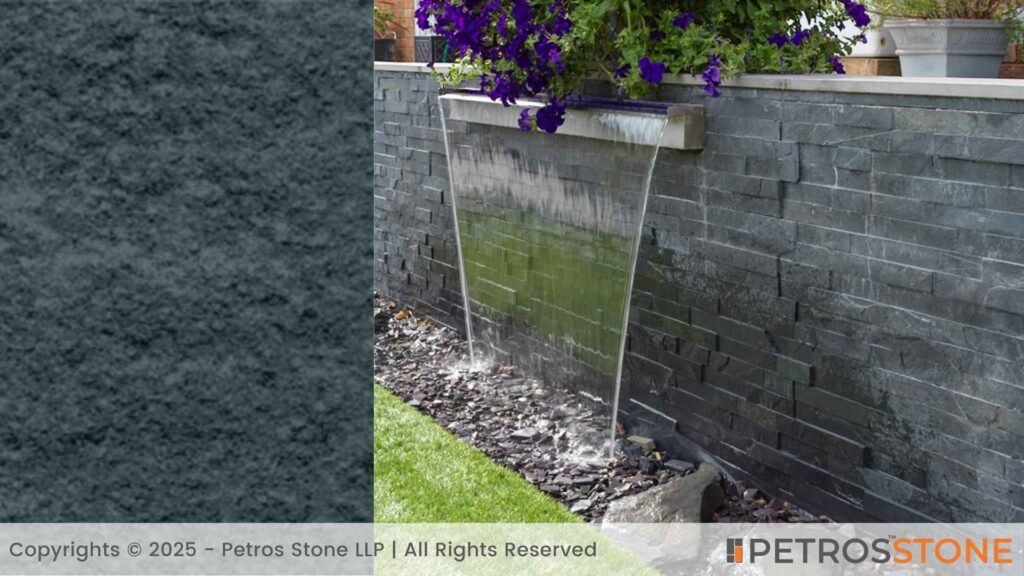
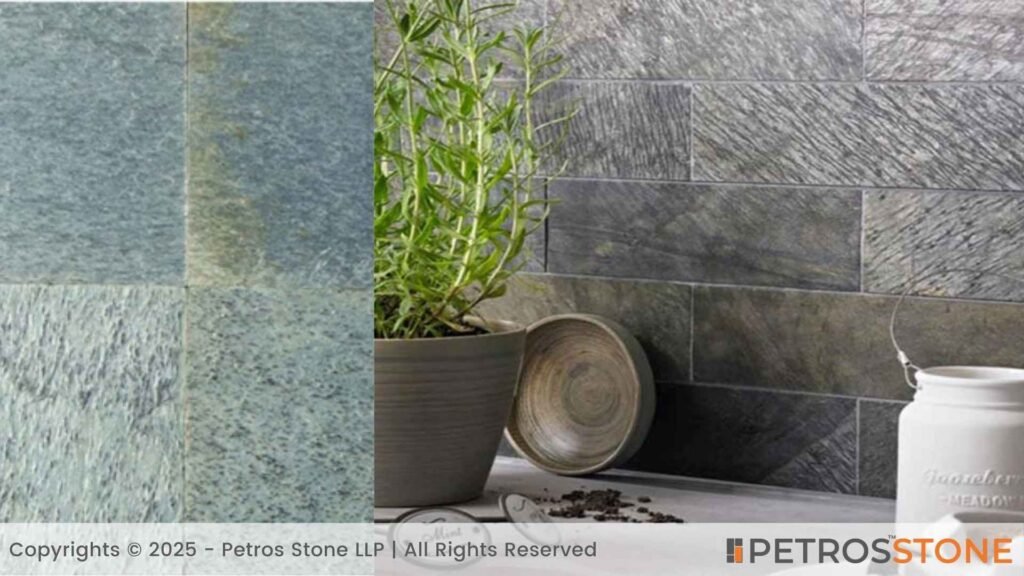
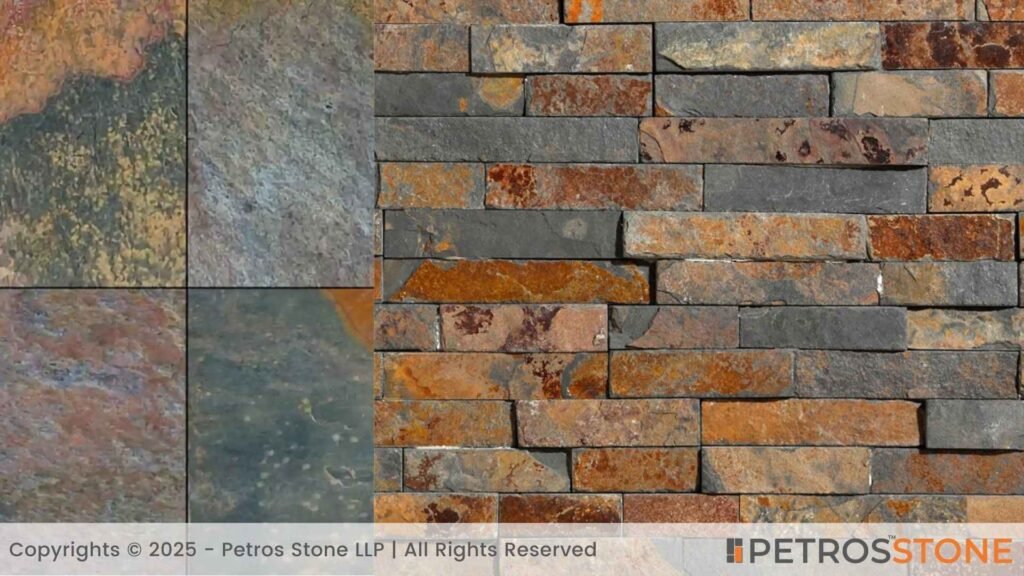
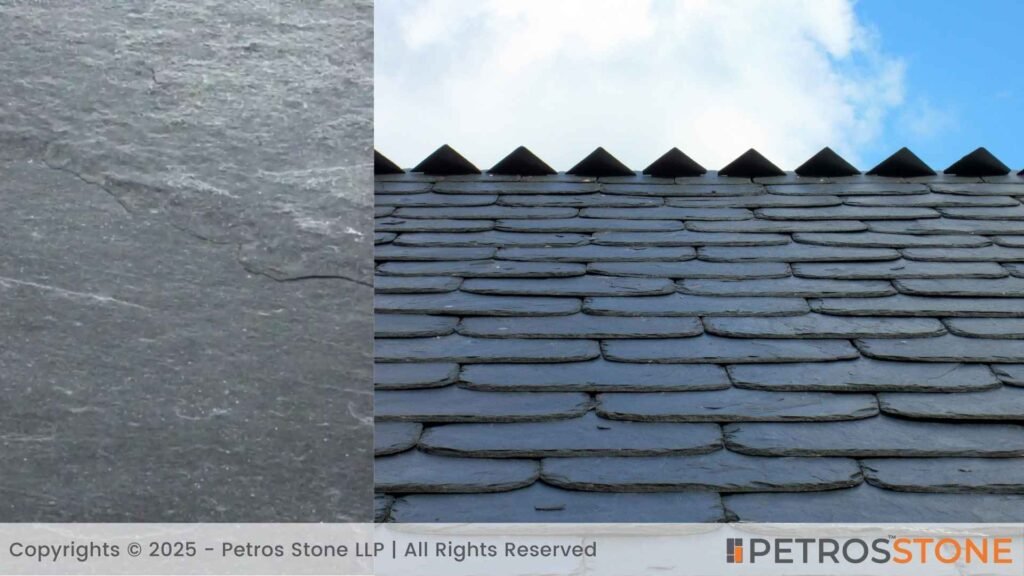
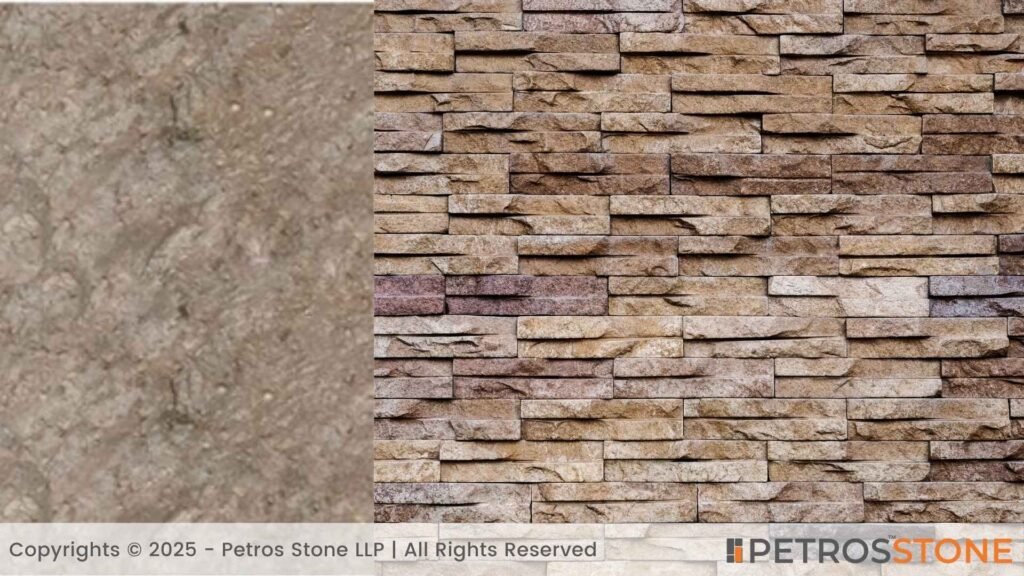
Table for Slate Color, Style Preference & Best Fit
| Color | Typical Style Preference | Best Fit |
| Charcoal Gray / Graphite Black | Modern and minimalist, with clean uniform tones | For urban homes and contemporary remodels |
| Silver-Blue | Coastal or polished finishes with a sleek, soft look | Coastal homes + Steel and glass structures |
| Forest Green | For those who want harmony with nature. For garden, wooden settings | Peaceful retreats, suburban homes |
| Rust-red / Ochre-Brown | Natural tones for earthy, warm aesthetics | Farmhouses, country-styled builds |
| Plum / Purple (Vermont Slate) | For distinct, upscale homeowners | Heritage-inspired architecture |
| Multi-tone | Creative and designed-oriented for those who take pride in handcrafted textures | Craftsman, artistic homes |
| Monochrome (Spanish Slate, Dark Gray) | For high-end, sleek finishes | Luxury remodels, contemporary rebuilds |
Slate Cladding Patterns and Styling
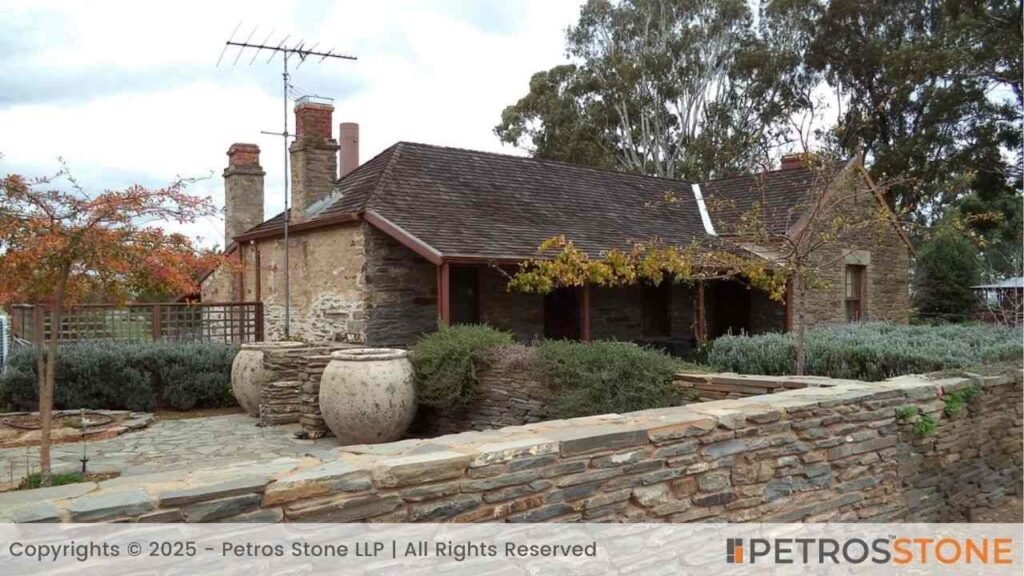
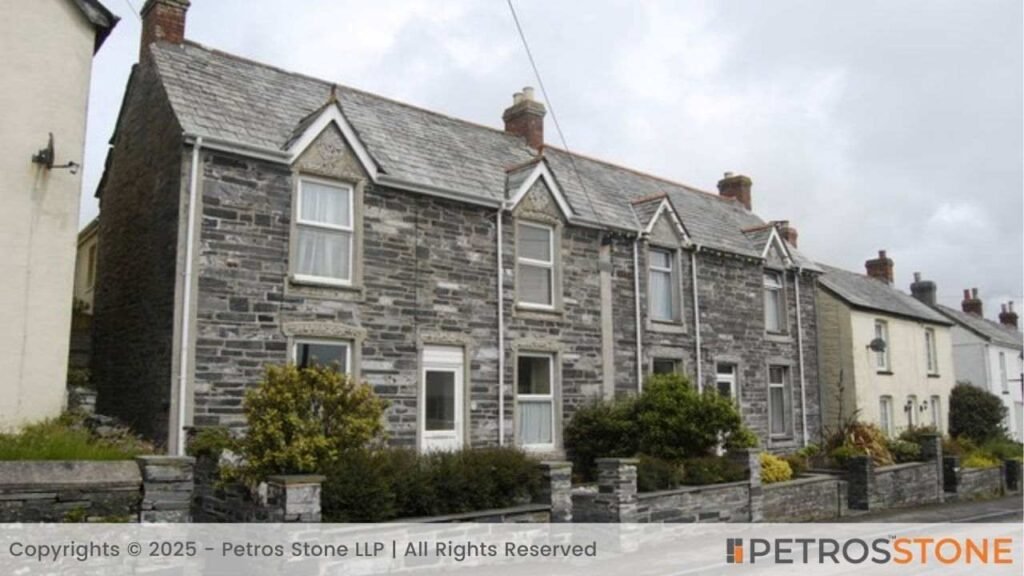
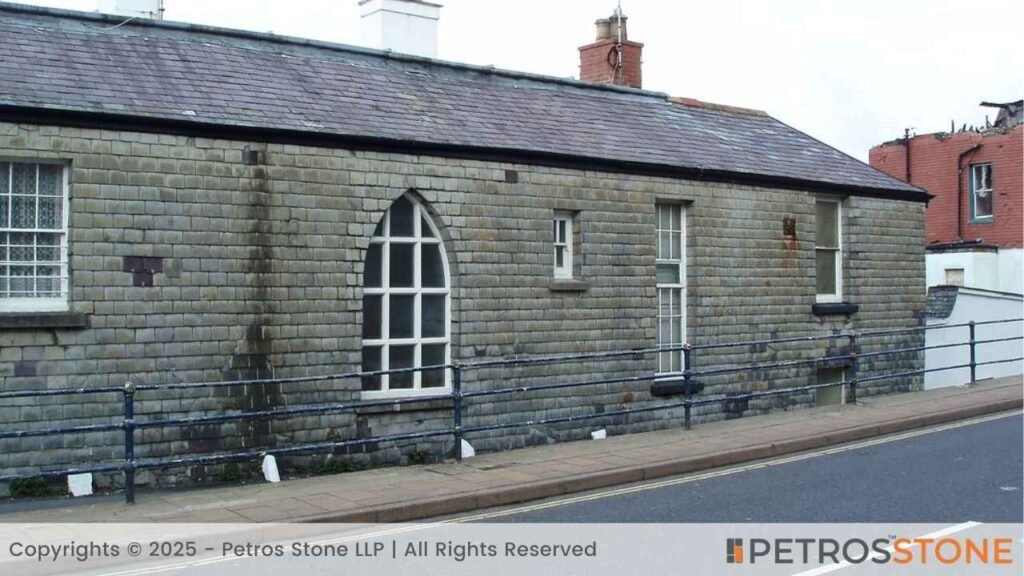
With coursed cladding, rectangular slabs are stacked in horizontal rows. They create clean lines that are ideal for modernist and contemporary facades.
- Slate pieces of varying lengths and heights create random or broken patterns. This produces a rugged feel similar to that of dry-stacked stone walls. This pattern is most commonly employed in accent walls and for garden-facing elevations.
- With mosaic slate cladding, the irregular polygonal shapes are random. This embraces a hand-crafted feel to the overall aesthetics of the house – best suited for homeowners who prefer rustic homes.
- Compared to other cladding options, most panelized slate systems are easier and faster to install. This reduces labor costs. Such pre-assembled strips replicate traditional slate layouts. This method is most commonly seen in remodel projects.
Patterns Guide and Best Fit
| Slate Pattern | Typical Homeowner | Best Fit |
| Coursed cladding | Likes clean order, symmetry | Modernist facades, contemporary remodels |
| Random broken bond | Rugged organic textures with handcrafted feel | Accent walls, rustic homes |
| Mosaic cladding | Distinctive, quirky, artistic layouts | Eclectic, heritage-inspired designs |
| Panelised slate systems | Authenticity, faster installation | Cost-conscious builds, remodel projects |
Top Design Ideas with Lighting and Tone
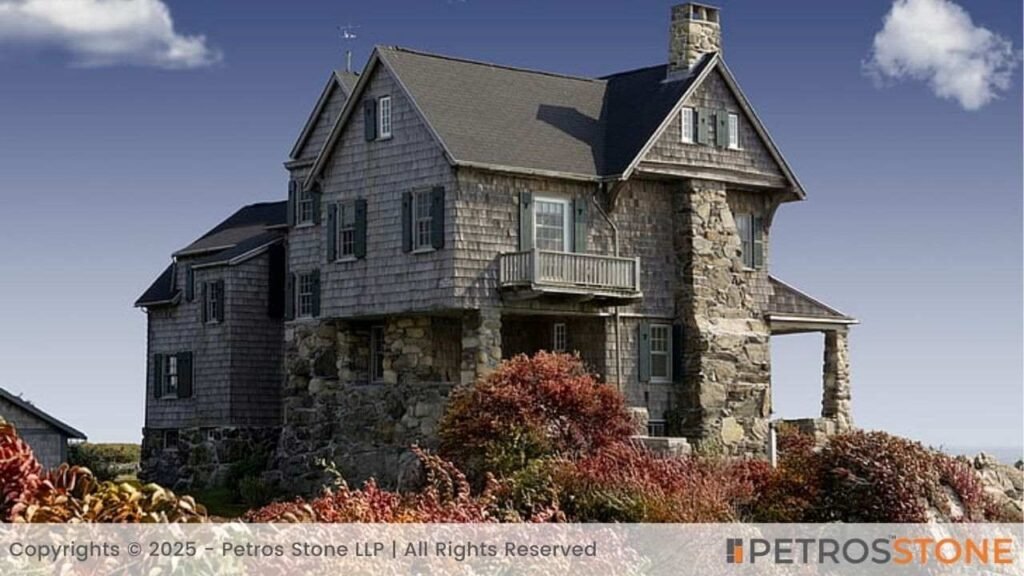
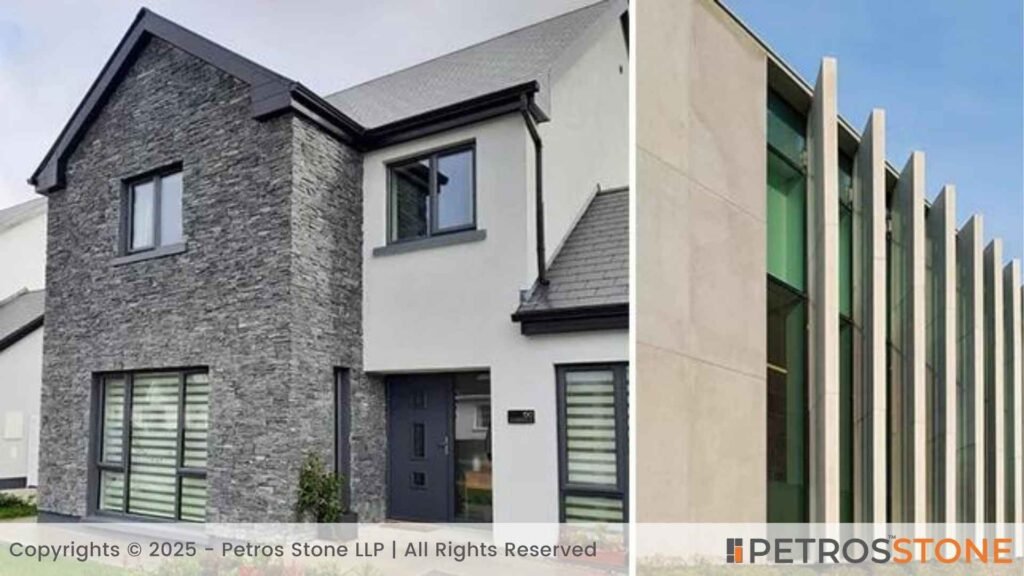
Natural slate cladding suits both traditional and contemporary homes. It adapts to different homeowner styles, but the finish and final look depend greatly on individual design sensibility and choices.
Slate Design Ideas with Useful Tips
| Design Idea | Description | Tone & Look | Lighting Pairing | Useful Tips |
| Contemporary Linear Stack | Horizontally stacked thin slate strips that create strong lines. Best for a crisp modern façade. | Cool, architecturally symmetrical, and grounded. | Concealed up-lighting at the base + linear LED strips to highlight the layers | Use aluminum trims for contrast and an engineered look |
| Rustic Fieldstone Style | Irregular slate pieces for traditional/rustic homes. | Warm, authentic – retreat-like feel | Amber-toned wall sconces that reveal texture shadows | Pair with natural wood doors and planters for a heritage feel |
| Dark Minimalist Facades | Deep gray or black slate for dramatic, urban homes. | Bold, luxurious, unapologetically urban | Cool LED light spills from the top to reveal textures | Use brushed steel fixtures to accentuate edges |
| Transitional Patchwork / Mosaic | Multi-sized tiles with subtle gray, green, or rust variations. | Inviting, dynamic, creative | Accent spotlights for color shifts + LEDs in patios for mood lighting | Use textured plaster for smooth material transitions |
| Modular Grid Panels | Large square or rectangular panels arranged in a clean, grid-like pattern. | Structured, modern, minimal | Linear LED accents to emphasize panel joints | Narrow black grout lines or metal insets for an industrial effect |
| Vertical Slate Slat Cladding | Tall, narrow vertical slate installations for improved texture and emphasis. | Height-enhancing, modern rustic | Vertical strip LED lighting enhances verticality and surface depth | Combine with greenery or vines to add an organic feel |
| Mixed Material Overlay | Slate combined with glass, wood, or metal panels in geometric patterns. | Contemporary, multi-faceted | Spotlighting for the interplay of light reflections | Focus on seamless transitions like hidden fasteners to blend materials visually |
| Weathered Patina Finish | Slate treated or naturally aged to bring out oxidized colors. | Earthy, time-worn elegance | Warm lighting with dimmers to bring out subtle color variations and nuances | Ideal for homes in natural surroundings |
Installation Techniques and Considerations
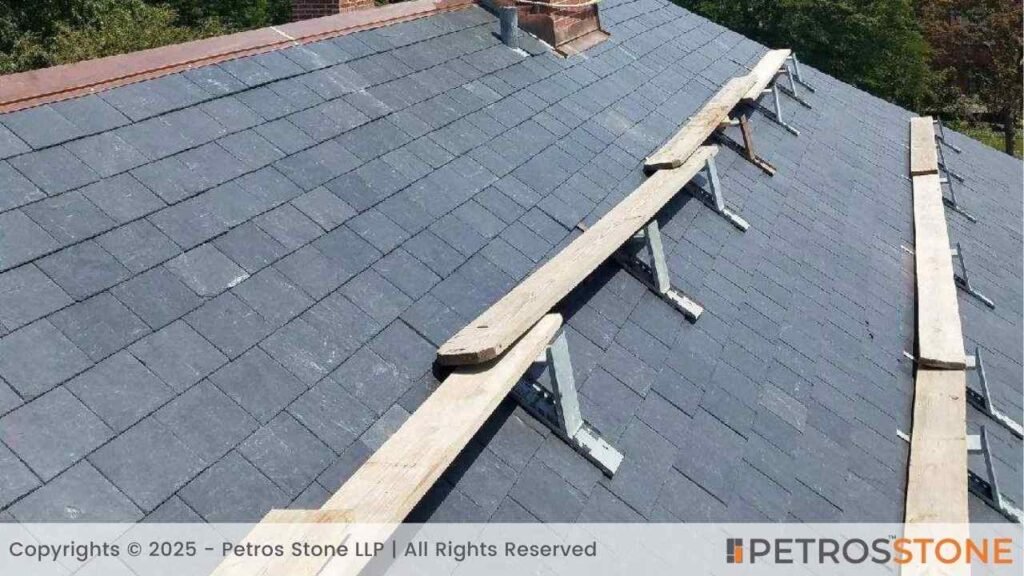
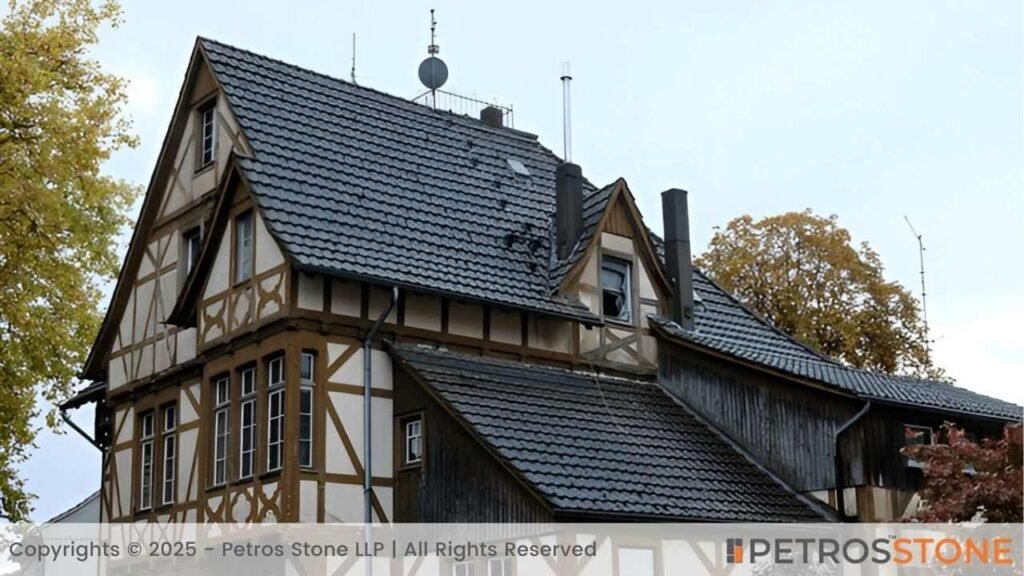
Proper installation methods play a key role in ensuring natural stone cladding performs beautifully and lasts for decades. Proper understanding of the installation techniques gives the homeowners a great advantage in execution.
Surface Preparation
- Surface preparation is the base for successful stone cladding. The exterior wall must be flat and clean. Uneven or porous surfaces should be smoothed and sealed to ensure a strong bond with adhesives and mechanical fixings.
- For locations prone to seismic activities or heavy rain, extra waterproof membranes or vapor barriers can be prepared to protect underlying structures.
Wet Installation – Direct Adhesion
- After wall-priming, cement-based mortar or adhesive is used to fix slate pieces directly on the wall.
- When the slates are pressed firmly on the wet mortar, joints between slates are filled and sealed to prevent any water ingress.
- The method is cost-effective and widely practiced. No pre-drilling is required, reducing the risk of cracking the slate.
- Dry, frost-free conditions are a must during installations. Mortar curing can cause time delays for the project.
Wet Installation – Spot Bonding Method
- Adhesive is applied on discrete spots rather than full coverage.
- Reduces water-staining risks, allows minor air gaps. Adhesives used are less – lowering the material costs.
- This method demands high-skill labor, and the slabs are precariously thin and fragile.
Dry Installation – Mechanical Fixing Method
- No adhesives used. Stainless steel anchors, clips, or brackets are used to attach the slate panels mechanically. This method is commonly employed for commercial buildings or thicker slate tiles.
- Holes are drilled in stones and corresponding wall anchors. Stainless steel bolts, hooks, or clips are used to securely fasten the slates.
- Small gaps of 2-3 mm should be left for drainage and expansion. There is good ventilation. Prevents mold.
- Individual tiles are easy to replace. But this technique is expensive due to hardware and labor costs.
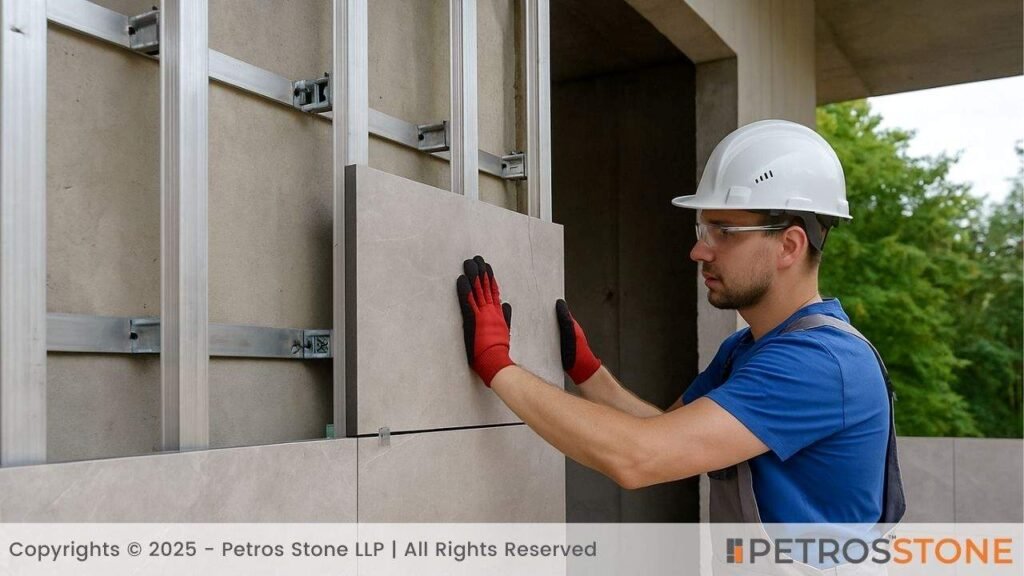
Ventilated Rainscreen Systems
- This advanced dry installation technique incorporates an air cavity of 20 – 40 mm between the slate cladding and the wall.
- Continuous airflow is maintained, reducing moisture build-up, enhancing the insulation.
- This technique is very useful in humid or rainy climates – best for regions with thermal fluctuations.
Battens and Subframe Installation
- For heavy or large slate pieces, vertical or horizontal timber, or metal battens are fixed to the wall as a supporting subframe. Slate cladding is then attached with adhesives or mechanical fixings to these battens.
- This technique ensures better load distribution – mainly on uneven walls.
- Exposed faces align better. Rainscreen principles ensure added ventilation paths.
Joint Treatments and Sealants
- Proper sealing of joints between slate pieces are crucial for prevention of water ingress. This improves longevity.
- For regions with freeze-thaw cycles or coastal salt spray, flexible UV-resistant sealants and grout are recommended.
- Narrow joints give a sleek look, while wider joints help with drainage and movement on irregular surfaces.
Geographic and Climate Conditions
| Geographic / Climatic Conditions | Installation Considerations | Benefit |
| Cold, snowy conditions | Ventilated rainscreen systems + flexible mortar layers | Prevent frost damage and freeze-thaw cracking |
| High humidity / Wet areas | Air gaps and waterproof membranes under cladding | Avoid moisture entrapment and mold growth |
| Seismic zones | Mechanical fixing with strong stone anchors | Enhance stone retention and flexibility during seismic activities |
| Coastal areas | Stainless steel fixings + corrosion-resistant adhesives | Resist salt air corrosion and deterioration |
Pros and Cons of Natural Slate Cladding
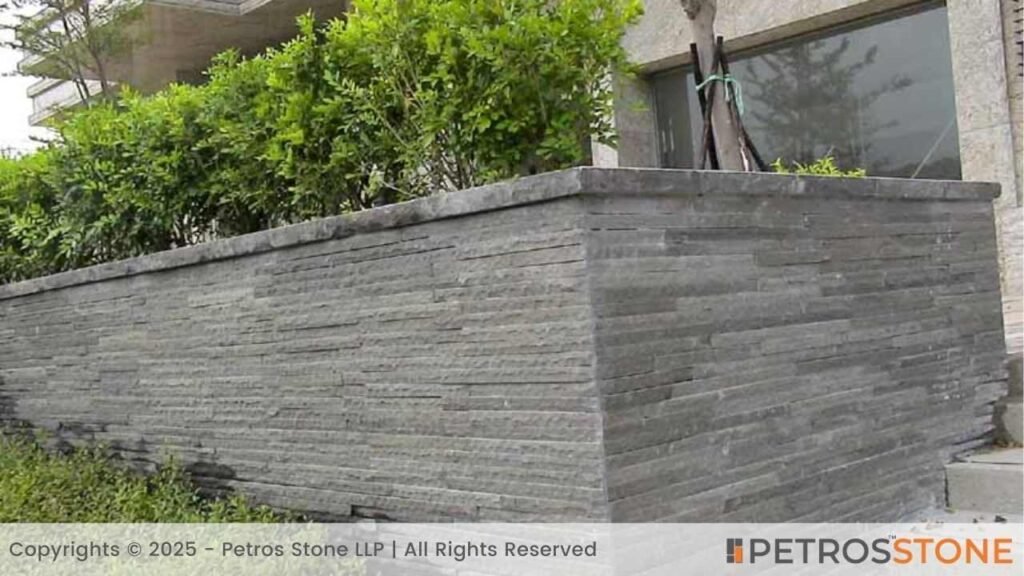
| Pros | Cons |
| Each piece has unique textures, patterns and colors. | Slate cladding materials can be more expensive compared to other cladding options. |
| Resistant to weather, fire, UV rays and physical wear. With proper care, natural slate cladding can last for 50+ years. | The slate is dense and heavy in weight. It adds significant dead load and calls for a strong substrate. |
| Natural slate has good thermal insulating properties. This helps in reducing energy costs. | Requires skilled labor, and is time-consuming due to its fragile nature. |
| Exhibits relatively high resistance towards mold, mildew and staining. | Porous varieties call for proper sealing. If not, there is risk of causing internal damage. |
| Natural slate is incombustible. | Individual slates are brittle in nature. They can crack or break very unexpectedly if mishandled. |
| Recyclable, and requires relatively low processing energy compared to synthetic materials. | Poses structural challenges. Careful structural planning is needed to accommodate its weight, and to prevent stone falling hazards. Risky in seismic zones. |
| Performs well across climates, when installed properly. | Without careful planning, the natural patterns and texture variations can lead to less uniform looks. |
| Due to enhanced curb appeal and aesthetic strengths, advantageous for resale value, which gets better with time. | Professional expertise is required to avoid moisture trapping and durability issues. |
| Improves indoor air quality through ionic exchange and microclimate regulation. | Very rarely, natural slate’s mineral composition and crystalline structure can interfere with local electromagnetic fields. This can subtly affect the performance of sensitive outdoor sensors, irrigation controllers and some wireless devices. |
Summary
Natural slate cladding is admired for its stunning appearance, durability, and fire resistance. It provides long-lasting protection in various climates, while elevating the aesthetics of both traditional and modern buildings. Although it requires skilled installation and structural support due to its weight, the results are visually rewarding and highly sustainable. With proper planning, it’s a smart investment for both residential and commercial spaces.
Key Takeaways
- Slate cladding combines beauty with durability, offering excellent weather resistance, fireproofing, and insulation.
- Natural color variation ensures uniqueness, with shades like charcoal, forest green, and rust-red aging beautifully over time.
- Installation flexibility, available in coursed, random, mosaic, and panelized patterns to match diverse architectural styles.
- Slate performs well across climates, especially when combined with ventilated rainscreens or mechanical fixings in humid or seismic zones.
- Higher upfront costs and skilled labor are balanced by longevity, low maintenance, and improved resale value over time.
Need Assistance?
Choosing the right slate for exterior wall cladding is a big decision. Because this will have a great long-term impact on your home’s beauty, durability, and value. If you have questions about natural slate cladding, do not hesitate to reach out to experienced professionals. Consulting with trusted individuals can help you rightly align your project with your core vision. We are here to guide you on this journey.
Feel free to get in touch for a free consultation, quote, and get a detailed understanding from our experts here at Petros®. Visit https://petrosstone.com/ or call +91-8446360361 and WhatsApp

Hi, I’m Hemanth, a storyteller at heart with a background in journalism, screenwriting, and brand writing. At Petros Stone, I explore the stories behind materials and transform technical details into content that’s clear, creative, and easy to act on.
Brown Granite
White Galaxy Granite
Blue Bahia Granite
Silver Cloud Granite
Black Pearl Granite
Dallas White Granite

